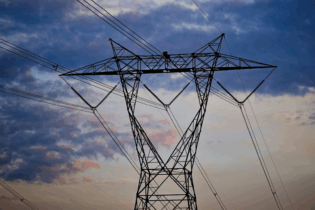Biogas digesters, which are commonly seen in many Asian countries, are among the most viable immediate green energy prospects in South Africa.
There are a number of different biogas technologies, but generally it is produced from decaying organic material in an anaerobic environment. The combination of gases produced and piped off includes methane and carbon dioxide. An effluent by-product of biogas systems is generally excellent plant fertiliser. The technologies are not new and they are low-tech. So why aren’t biogas projects common in South Africa? The country probably has a total of about 150 biogas digesters, most of them small. This compares with an estimated 17-million in China and 12-million in India. About 1 000 commercial biodigesters are installed every year in Germany, where biogas now accounts for about 17% of total electricity generation. Internationally, biogas projects vary from household (normally farm household) installations to 500MW installations (the latter being about a sixth of the size of an average South African power station). Until a few years ago, Eskom was supplying among the world’s cheapest (coal-based) electricity, which was available at the flick of a switch. The production of electricity from sustainable energy projects generally still costs two or three times Eskom’s tariffs. As Eskom’s electricity prices increase, the viability of biogas (and other sustainable energy) projects obviously increases. Also, a highly attractive combination of Eskom and government incentives for this kind of project has recently become available. Payback period Biogas projects could now often yield an internal rate of return of 35% to 40% a year, resulting in a maximum of a four-year payback period – compared with 10 to 15 years for photovoltaic (solar) systems, said Ryan Dearlove of BiogasSA, a local biogas technology supply company. Biogas projects have other major advantages over solar and wind technologies: they can generate electricity 24 hours a day and biogas can be stored much more easily and cheaply than electricity.Major rebates or incentives that now enhance the potential viability of alternative energy projects are:
- Eskom’s integrated demand management incentive or rebate. If a current customer generates electricity on his or her site in lieu of buying electricity from Eskom, the company will in effect pay the business for not buying from it. Eskom will pay 120c per kWh for any electricity generated like this and consumed on the site between 6am and 10pm on weekdays.
- Assuming approval, Eskom’s payment is 70% upfront and 10% a year for three years. Eskom’s aim is to ease the capital burden of constructing new generating facilities;
- The department of trade and industry’s manufacturing competitiveness enhancement programme, in which large amounts of money are available to increase the competitiveness of a business. The programme offers a 30% to 50% capital grant upfront for projects; and
- For the balance of capital not provided by the above, the Industrial Development Corporation’s green industries unit offers soft loans (finance at up to 3% lower than prime) for projects.







